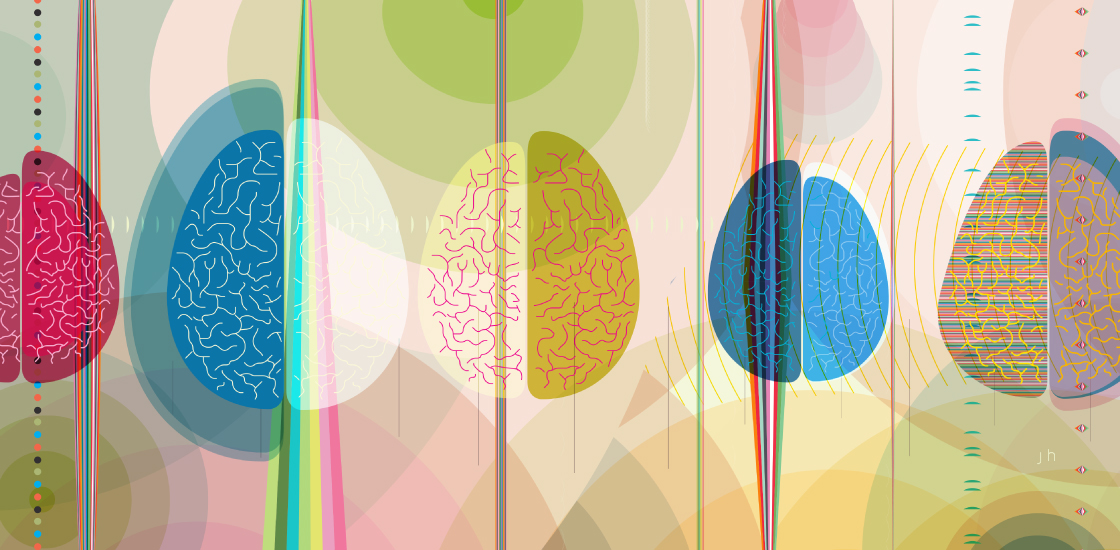Autistic boys and men show notable differences in brain development, according to magnetic resonance imaging scans taken over a 16-year period.
The results, published in NeuroImage in April, build on an eight-year study of some of the same people and add two more time points to the previous three.
“With the addition of these time points, we now see that these non-uniform regional volumetric differences really persist into very late childhood,” says co-lead investigator Brandon Zielinski, associate professor of pediatrics and of neurology at the University of Utah in Salt Lake City.
He and his colleagues scanned the brains of 105 autistic and 125 non-autistic boys and men at up to five time points from 2003 to 2019. Participants ranged in age from 6 to 45 years at the first scan. Although the researchers recruited some new participants over the course of the study, 73 percent of the original autistic participants and 50 percent of controls underwent all five scans.
Autistic boys tended to have more gray matter early in childhood but a similar volume to that of controls by age 12, the researchers found. Conversely, their ventricles, which produce and transport cerebrospinal fluid throughout the brain, started out the same size as controls but tended to expand by age 21. The corpus callosum, a band of nerve fibers that connects the brain’s two hemispheres, tended to grow more slowly and ended up smaller than that of controls by age 36.
Many of the findings replicate previous research, says Eric Courchesne, professor of neuroscience at the University of California, San Diego.
“But they’ve done it a different way. They’ve improved it,” he says. “And that shows the process of science.”
Last scan:
At the new, fifth time point, the researchers divided the autistic participants into two subgroups — 61 people who still met the diagnostic criteria for autism, according to their scores on the Autism Diagnostic Observation Schedule, and a group of 17 of people who no longer did.
Those who continued to meet the diagnostic criteria tended have a smaller corpus callosum than those who did not, the team found.
Finding this sort of structural difference within the autism group was unexpected and “really interesting,” says study investigator Molly DuBray Prigge, a research associate in Zielinski’s lab. “Now we’re wanting to look back and see, how stable are these individuals [who no longer meet the diagnostic criteria]? If we brought them back in two years, would they also still no longer meet criteria for [autism]?”
Prigge also did not expect to find that ventricle size appeared increase with age at a greater rate in the autism group than in the controls, she says.
Previous studies have found enlarged ventricles in autistic adults, but the greater rate of increase is a new finding, made possible by this study’s longitudinal design, the researchers note.
Most imaging studies in autism research are cross-sectional, meaning they compare single scans from participants of different ages, Prigge says. But longitudinal studies such as this one enable researchers to examine an individual’s development over time, providing insight that a cross-sectional study would not.
“Looking at those within-subject changes is really important,” says Carrie Bearden, professor of psychiatry and biobehavioral sciences and of psychology at the University of California, Los Angeles, who was not involved in the study. “It’s so hard to get these long, multiple-time-point studies.”
The study design also enabled the team to look at developmental trends across a broad age range in less time than would be possible in a traditional longitudinal study, in which all participants would be similar in age, Zielinski says.
Still, the results do not explain why the differences exist, and the findings may not apply to girls and women.
Different scanning techniques may offer additional insights, Prigge says, noting that the group also uses functional magnetic resonance imaging. And so might additional scans: They have since scanned many of the same participants a sixth time to see if the development patterns they have observed continue.





